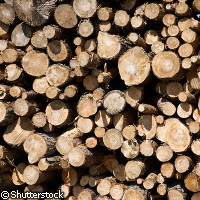EU-funded study opens the door to new innovations in biofuels
An international team of scientists has provided major insights into the underlying genetics of Postia placenta, a brown-rot fungus known for its efficient break-down of cellulose, a structural component of plant cells. The results, published in the Proceedings of the National Academy of Sciences (PNAS), are an outcome of the Biorenew ('White Biotechnology for added value products from renewable plant polymers: Design of tailor-made biocatalysts and new industrial bioprocesses') project, which is funded with EUR 9.5 million under the EU's Sixth Framework Programme (FP6). Lignocellulose, a combination of cellulose sugars and lignin, helps to maintain the structure of the cell walls of plants. The compound effectively acts as a plant's scaffolding, keeping stems rigid and robust through the cross-linking of cellulose, hemicellulose and lignin. The strength of lignocellulose is important for plants, but is vexing to the producers of biofuels. To create biofuels, plants must be broken down into sugars that can be fermented into ethanol, which can be used as a transportation fuel. However, because the sugars are bound so tightly within the lignocellulose complex, their extraction is difficult and represents a major stumbling block for the industry. Research efforts have so far focused on ways of working around lignin, separating out the cellulose and breaking it down into simple, fermentable sugars. To do this, harsh chemicals and high-heat treatments have been employed. A less energy-intensive way of breaking down lignocellulose entails harnessing the destructive power of brown-rot fungus, which normally spends its time happily turning trees into pulp in forest ecosystems and costing the timber industry a fortune in replacement costs. In contrast to white-rot fungi, which degrade all components of lignocellulose, brown-rot fungi separate the cellulose without destroying the lignin. In the current study, more than 50 researchers from several countries, including Austria, the Czech Republic, Germany, France and Spain, combined their efforts to systematically examine the genome and biochemistry of the P. placenta fungus. Extensive investigations revealed that the fungus completely lacked genes to produce cellulase (an enzyme that breaks down cellulose), but had a unique series of enzyme systems that acted together to degrade cellulose. 'The microbial world represents a little explored yet bountiful resource for enzymes that can play a central role in the deconstruction of plant biomass-an early step in biofuel production,' said Dr Eddy Rubin, Director of the US Department of Energy's Joint Genome Institute. 'The brown-rot P. placenta's genome offers us a detailed inventory of the biomass-degrading enzymes that this and other fungi possess.' Current research efforts focus on extracting sugars from perennial grasses and fast-growing trees such as poplar that are bred specifically as biomass for biofuels. Finding an appropriate mix of enzymes to speed up this process will be invaluable for getting the most out of the biomass while using the least energy. 'Nature offers some guidance here,' said Dr Dan Cullen of Forest Products Laboratory in the US. 'Postia has, over its evolution, shed the conventional enzymatic machinery for attacking plant material. Instead, the evidence suggests that it utilises an arsenal of small oxidizing agents that blast through plant cell walls to depolymerise the cellulose. This biological process opens a door to more effective, less energy-intensive and more environmentally sound strategies for more lignocellulose deconstruction.' The genetic information gleaned by the scientists goes a long way to explain the complex biochemical machinery that lets brown-rot fungi destroy wood so easily. This new knowledge is expected to open the door for major innovations in the biofuels industry. 'For the first time we have been able to compare the genetic blueprints of brown-rot, white-rot and soft-rot fungi which play a major role in the carbon cycle of our planet,' said Dr Randy Berka of Novozymes, Inc. in the US. 'Such comparisons will increase our understanding of the diverse mechanisms and chemistries involved in lignocellulose degradation. This type of information may empower industrial biotechnologists to devise new strategies to enhance efficiencies and reduce costs associated with biomass conversion for renewable fuels and chemical intermediates.'



